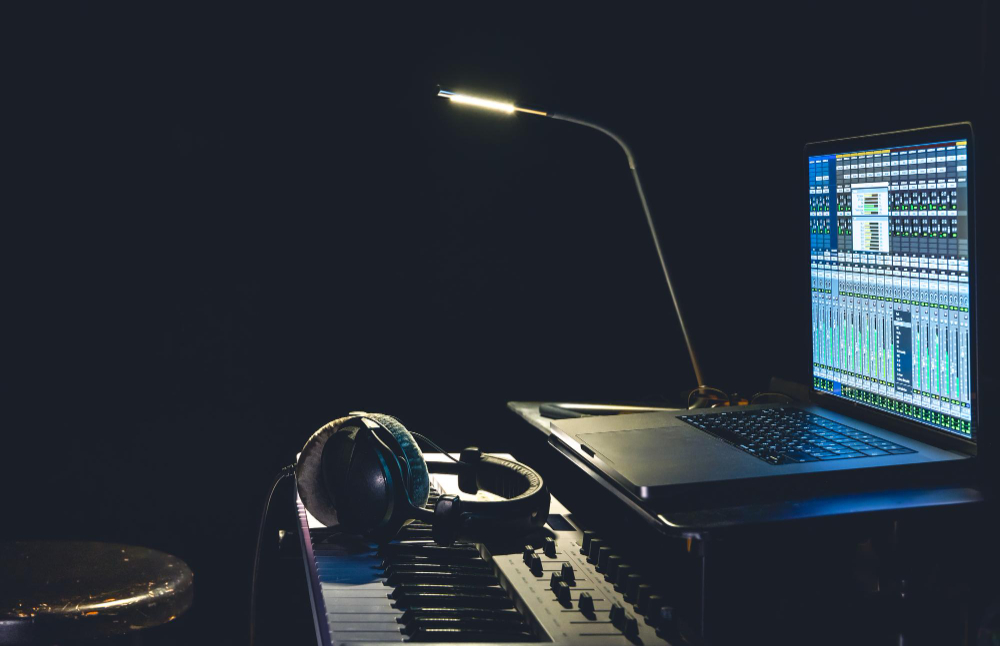AI Mastering vs Manual Mastering: What’s Better?

Table of Contents
Introduction
Mastering is the final and arguably most critical step in audio production. It polishes your mix, optimizes it for streaming or radio, and ensures consistency across playback systems. Traditionally, this was the domain of skilled human engineers. But now, artificial intelligence is offering a faster, more accessible alternative through AI mastering. For musicians, producers, and audio professionals, this raises a key question: which method is better for achieving that perfect sound?
In this blog, we dive deep into AI mastering vs manual mastering, comparing their strengths, limitations, and ideal use cases. Whether you’re an indie artist looking to finalize your track on a budget, or a label seeking nuanced perfection, this guide will help you understand which approach fits your needs best. Explore AI and hybrid mastering options with A3Tunes.
Things to Know Before Choosing a Mastering Approach
Before deciding between AI and manual mastering, it’s essential to understand the fundamentals of mastering itself, and how each approach interacts with modern production workflows.
What Is Audio Mastering?
Mastering is the post-mixing process of preparing audio for distribution. It includes adjusting EQ, compression, limiting, stereo enhancement, and ensuring the track meets loudness standards for platforms like Spotify, YouTube, or vinyl.
Whether done manually or via AI, mastering enhances clarity, balances frequencies, and ensures consistency across playback systems. It’s the final polish that turns a good mix into a professional-sounding track.
The Evolution of Mastering Technology
Mastering has evolved from analog gear and tape machines to sophisticated digital plugins and now AI-driven algorithms. Traditional methods required years of expertise, while AI tools use vast datasets to simulate expert decisions.
Digital innovations have made mastering more accessible and affordable, especially for independent artists. AI mastering, in particular, democratizes access to high-quality output.
Understanding AI Mastering Systems
AI mastering platforms analyze a track’s frequency, dynamics, and stereo field, then apply algorithmic adjustments. These tools often allow genre selection, target loudness, and minor tonal adjustments.
Popular AI mastering services use machine learning trained on thousands of professionally mastered tracks. While efficient, they lack human intuition, especially in complex or creative projects.
When to Use Manual Mastering
Manual mastering involves a professional engineer who listens critically and makes nuanced decisions. They tailor their approach to the song’s intent, artist preferences, and intended audience.
This method excels when emotional detail, sonic character, or mix imperfections need correction. It’s ideal for albums, cinematic scores, or high-end commercial releases.
The Importance of Reference Tracks
Whether you choose AI or manual mastering, using reference tracks ensures consistency and quality. References guide tonal balance, loudness, and dynamic range.
Some AI platforms allow uploading reference tracks, but human engineers typically interpret references with more context, offering adaptive creativity.
Comparing AI Mastering vs Manual Mastering
1. Speed and Accessibility
AI mastering is almost instant. Upload your track, choose parameters, and download the mastered version in minutes. It’s a major time-saver for artists on tight schedules.
Manual mastering takes time—often days—depending on engineer availability, track complexity, and revisions. It requires back-and-forth communication, but results are personalized.
2. Cost and Affordability
AI mastering is cost-effective. Platforms offer pay-per-track or subscription models, making it accessible to hobbyists and emerging artists.
Manual mastering can be expensive, especially from experienced engineers. Rates range from $50 to several hundred per track. However, the investment often matches the quality delivered.
3. Sound Quality and Precision
AI tools deliver a consistent, polished sound suitable for many genres. They’re particularly good for electronic music, pop, and other well-mixed digital productions.
Human engineers bring subjective listening, emotional sensitivity, and corrective capabilities that AI lacks. They address mix flaws, create artistic dynamics, and enhance sonic texture.
4. Customization and Creative Control
AI mastering is limited to preset algorithms. Some offer minor tweaks, but customization is minimal. They treat all tracks within selected parameters.
Manual mastering offers full control. Engineers consult with artists, adapt tools to each section of a song, and introduce creative flourishes based on the track’s story.
5. Error Handling and Problem Solving
AI systems assume the mix is already well-balanced. They can’t fix major issues like harsh frequencies, sibilance, or inconsistent dynamics.
Manual mastering can correct flawed mixes, suggest remixing if needed, and work around issues creatively. It’s ideal for salvaging problematic recordings.
6. Use Cases and Industry Fit
AI mastering is great for demos, singles, streaming uploads, and quick releases. It’s perfect for tight timelines, budget projects, or non-critical content.
Manual mastering suits albums, EPs, film scores, live recordings, and releases aimed at labels, festivals, or vinyl pressing. The attention to detail is crucial here.
7. Consistency Across Multiple Tracks
AI mastering can struggle with consistency in albums or EPs. Each track is mastered in isolation, potentially leading to volume or tonal discrepancies.
Human engineers master multiple tracks with cohesion in mind. They ensure flow, dynamic balance, and tonal unity across the project.
8. Learning and Feedback Opportunities
AI platforms offer limited learning. You get the output, but not the rationale. Some offer before/after comparisons, but little else.
With manual mastering, you can interact with engineers, learn why changes were made, and apply those lessons to future mixing or mastering efforts.
9. Platform Optimization
AI mastering tools often target popular streaming services with preset loudness targets (like -14 LUFS for Spotify). They optimize technical standards well.
Manual engineers can fine-tune tracks for multiple formats—radio, streaming, film, or physical media—and offer specific deliverables (DDPi, WAV, vinyl pre-masters).
10. Hybrid Approaches: Best of Both Worlds
Some services combine AI and human oversight. You get the speed of automation with a final polish from an engineer. This is becoming a popular middle-ground solution.
Hybrid mastering can also mean using AI tools within a manual session—for instance, letting AI handle tonal matching while engineers fine-tune compression or stereo image.
Why Choose A3Tunes for Your Mastering Needs?
At A3Tunes, we understand that every track tells a unique story. That’s why we offer both AI-assisted and fully manual mastering options. Whether you’re a bedroom producer needing quick turnaround, or a seasoned artist seeking refined depth, we tailor our services to meet your needs.
Our AI mastering solution delivers professional-grade sound within minutes, optimized for all major streaming platforms. For clients who want deeper customization, our experienced engineers provide manual mastering with detailed feedback and personalized attention.
A3Tunes also offers hybrid mastering, combining algorithmic efficiency with human intuition. Our tools ensure your music sounds its best across all devices, formats, and genres. Check out our mastering services to see what works best for you.
Conclusion
AI mastering and manual mastering both serve essential roles in modern music production. The best choice depends on your budget, timeline, project goals, and the emotional weight of your music. AI offers speed, affordability, and accessibility. Manual mastering delivers precision, personalization, and emotional depth.
For many artists, a hybrid approach offers the perfect balance. Understanding what each method excels at empowers you to choose confidently and make the most of your mastering process.
Whether you’re aiming for playlist placement or vinyl perfection, mastering is the final step in making your music shine. Let tools like A3Tunes guide you toward the sound your vision deserves.
FAQs
- What is the main difference between AI and manual mastering?
AI mastering is algorithm-driven and fast; manual mastering is handled by a human engineer with critical listening and experience. - Is AI mastering good enough for commercial release?
For many genres, yes. But for high-stakes projects like albums or film, manual mastering is recommended. - Can I use both AI and manual mastering?
Absolutely. Hybrid mastering combines the speed of AI with the nuance of human touch. - How much does mastering typically cost?
AI mastering ranges from free to $10 per track. Manual mastering can cost $50 to $300 per track depending on experience and services. - Does AI mastering work for all music genres?
AI works well for electronic, pop, and hip-hop. Genres needing nuance like jazz or classical may benefit more from manual mastering. - How can I tell if my track is ready for mastering?
Ensure your mix is balanced, with no clipping, and meets the headroom requirement (usually -6 dB). - Can mastering fix a bad mix?
AI cannot; manual mastering may help but a remix is often advised for best results. - What formats should I submit for mastering?
High-quality WAV or AIFF files, usually 24-bit, with no compression or limiting on the master bus. - Do mastering services adjust individual instruments?
No. Mastering works with the final stereo mix. Instrument changes require going back to the mix stage. - Why choose A3Tunes for mastering?
We offer AI, manual, and hybrid mastering to suit all budgets and needs, with a focus on quality, feedback, and fast delivery.
Share this article
Loading latest posts...

Bengaluru, INDIA
2025 A3 Tunes.All Rights Reserved

Bengaluru, INDIA
2025 A3 Tunes.All Rights Reserved